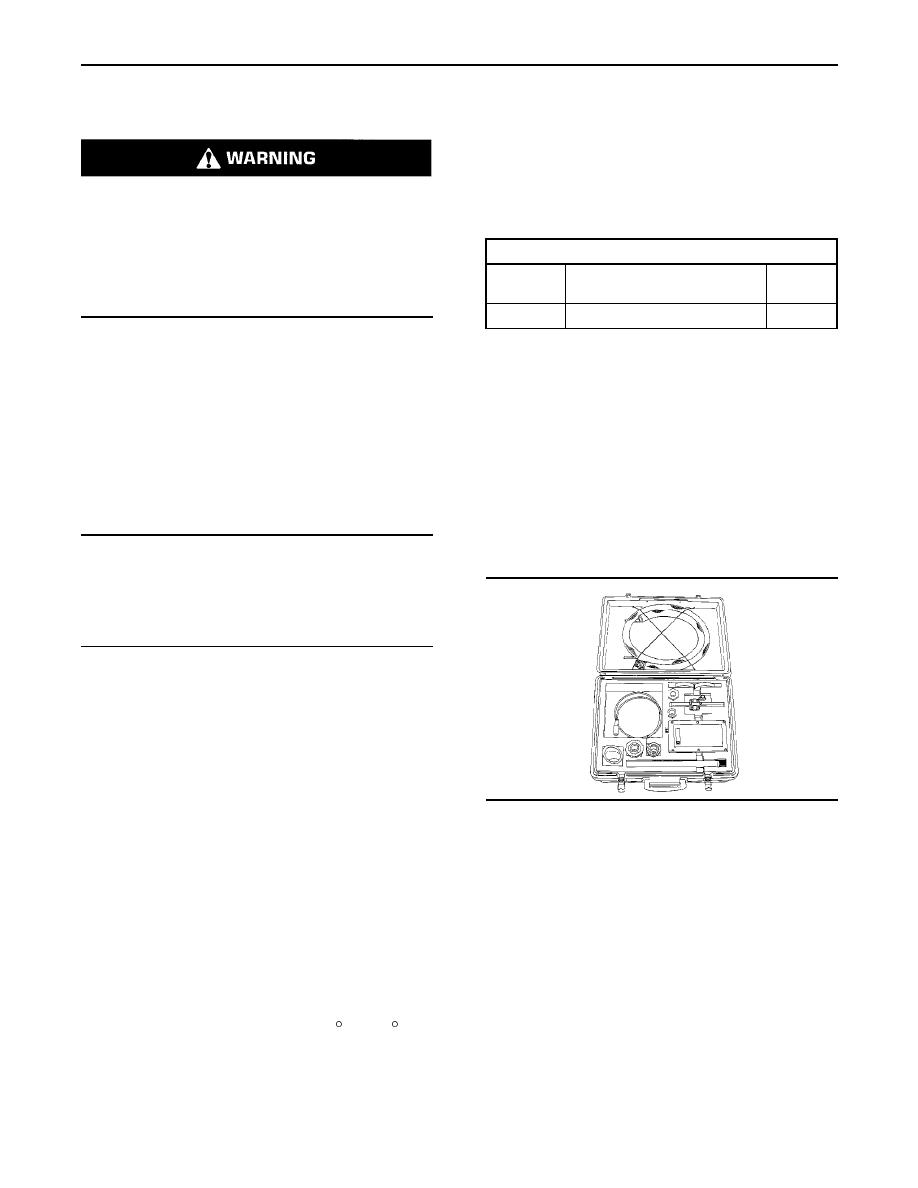 |
|||
|
|
|||
|
Page Title:
Engine Crankcase Pressure (Blowby) - Test |
|
||
| ||||||||||
|
|
 TM 9-2320-312-24-2
Testing and Adjusting Section
Turbocharger Failure
i01281928
Engine Crankcase Pressure
(Blowby) - Test
Personal injury can result from air pressure.
SMCS Code: 1215; 1317
Personal injury can result without following prop-
Table 12
er procedure. When using pressure air, wear a pro-
Tools Needed
tective face shield and protective clothing.
Part
Part Name
Quantity
Maximum air pressure at the nozzle must be less
Number
than 205 kPa (30 psi) for cleaning purposes.
8T-2700
1
Blowby/Air Flow Indicator
If a turbocharger failure occurs, remove the air-to-air
Damaged pistons or damaged rings can cause
aftercooler core. Internally flush the air-to-air
too much pressure in the crankcase. This condition
aftercooler core with a solvent that removes oil
will cause the engine to run rough. There will be
and other foreign substances. Shake the air-to-air
more than the normal amount of fumes (blowby)
aftercooler core in order to eliminate any trapped
rising from the crankcase breather. The breather
debris. Wash the aftercooler with hot, soapy water.
can then become restricted in a very short time.
Thoroughly rinse the aftercooler with clean water
This condition can cause oil leakage at gaskets and
and blow dry the aftercooler with compressed air.
seals that would not normally have leakage. Blowby
Blow dry the assembly in the reverse direction of
can also be caused by worn valve guides or by a
normal air flow. To make sure that the whole system
failed turbocharger seal.
is clean, carefully inspect the system.
Note: The electronic service tool can be used to
NOTICE
measure crankcase pressure.
Do not use caustic cleaners to clean the air-to-air af-
tercooler core.
Caustic cleaners will attack the internal metals of the
core and cause leakage.
Dynamometer Test
In hot ambient temperatures, chassis dynamometer
tests for models with an air-to-air aftercooler can
add a greater heat load to the jacket water cooling
system. Therefore, the jacket water cooling system's
temperature must be monitored. The following
measurements may also need a power correction
g00286269
factor:
Illustration 62
8T-2700 Blowby/Air Flow Indicator
Inlet air temperature
The 8T-2700 Blowby/Air Flow Indicator is used
Fuel API rating
to check the amount of blowby. Refer to Special
Instruction, SEHS8712, "Using the 8T-2700
Fuel temperature
Blowby/Air Flow Indicator" for the test procedure
for checking the blowby.
Barometric pressure
With dynamometer tests for engines, use the
FT-1438 Aftercooler (Dynamometer Test). This tool
provides a water cooled aftercooler in order to
control the inlet air temperature to 43 C (110 F).
|
|
Privacy Statement - Press Release - Copyright Information. - Contact Us |